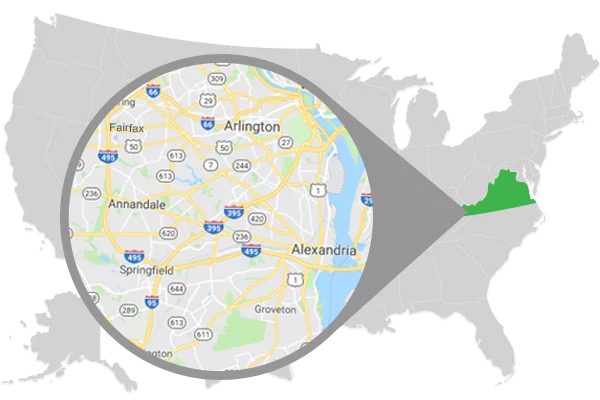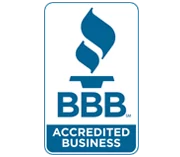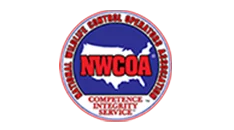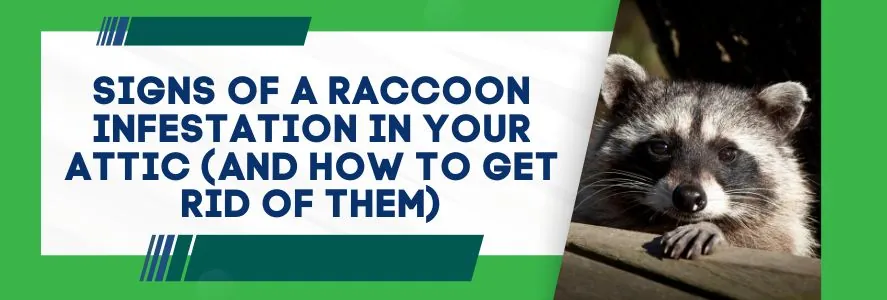
Have you noticed loud shuffling or stomping sounds coming from your attic space in Alexandria, Arlington, Fairfax, Fredericksburg or Stafford? You might have a raccoon problem. Raccoons are known to seek shelter inside attic spaces, as attics can provide them with warmth and safety, especially if they are accompanied by their babies. Nesting inside your attic space also provides them a home near an easy food source, as these omnivorous scavengers will often raid your trash cans for food scraps, also taking the time to steal from left-out pet food bowls. Raccoons in your attic can also rip up and shred your insulation, tear through HVAC ducts, and damage wires, as well as spread diseases like rabies and raccoon roundworm. If you need raccoon removal services in Northern Virginia, contact the experts at Summit Wildlife Removal today for a FREE estimate at 703-884-2124!
How Do Raccoons Get Into Your Attic?
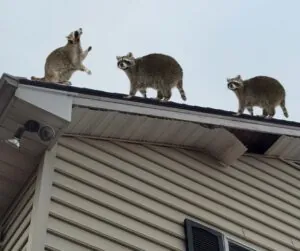
Common Signs of a Raccoon Infestation
If you think you have a raccoon or a family of raccoons inside your attic, it’s important to check for the common warning signs:
- Strange Noises at Night: raccoons are a mostly nocturnal species, and during the nighttime you might hear them loudly shuffling or stomping through the attic, scratching at the walls, or making chattering noises.
- Foul Odors: raccoons will dig latrines in your insulation, where they will deposit large quantities of feces and urine that can give off a foul odor, and over time, the waste can begin to seep through the floor into the rest of the home.
- Damage to Insulation: raccoons are known to damage insulation in the attic, often ripping it up to create their nests. If you go into your attic and see shredded insulation, this is a surefire sign that you have a raccoon problem
- Visible Tracks and Droppings: seeing raccoon footprints or raccoon poop around your attic or anywhere else on your property is a sign that these critters have set up shop
- Tipped Over Garbage Cans: raccoons love to raid garbage cans, so if you are waking up to your outdoor garbage cans knocked over and trash strewn across the lawn, you probably have raccoons.
Why Raccoons in Your Attic Are a Big Problem
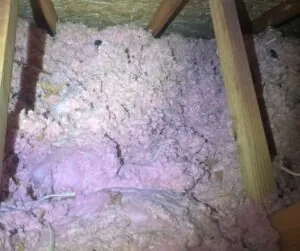
Raccoons can also pose a safety threat and become a health hazard. Raccoons can become very aggressive when confronted or cornered, especially if it’s a mother raccoon with her babies. If you get too close, raccoons can lash out with their sharp claws and teeth, which can deliver severe injuries. Raccoon bites and scratches can also spread the rabies virus, which is fatal in both people and animals without treatment. Raccoons can also spread several other diseases and parasites, from raccoon roundworm and leptospirosis to ticks and fleas. If you have noticed a raccoon living inside your attic, it is important to get rid of them as soon as possible.
How to Get Rid of Raccoons in Your Attic
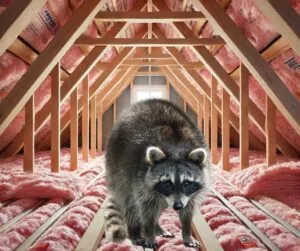
We start with a comprehensive inspection, where we locate all the current entry points as well as the potential future entry points and weak spots. Then, we begin trapping and removing the raccoons. Next, we seal off all entry points and fortify all weak spots to prevent the raccoons from getting back inside and any other wildlife or pest from getting in. Summit Wildlife Removal also offers insulation services, if a raccoon has destroyed or soiled your insulation, we can remove the damaged insulation, clean the area, and replace it with newer, highly effective material.
Preventing Future Raccoon Infestations
Having a raccoon infestation in your home can be a frightening experience, but don’t worry, because raccoon infestations can easily be prevented in the future. Raccoons are often attracted to homes due to the abundance of food, so not leaving pet food out and keeping your trash cans secured and sealed can help prevent raccoon problems. Raccoons can easily jump from tree branches to your roof, so keeping your trees trimmed can make it harder for raccoons to get on your roof. Chimneys and vents are an easy way for raccoons to gain access to your home, so having chimney caps and vent guards installed by Summit Wildlife Removal can help keep these scavengers out. If you suspect a raccoon infestation on your property, don’t wait to act. Contact the experts at Summit Wildlife Removal to get started at 703-884-2124! We offer raccoon trapping, removal, and prevention to our customers in Alexandria, Arlington, Fairfax, Fredericksburg, Stafford, and everywhere else in the Northern Virginia area.



